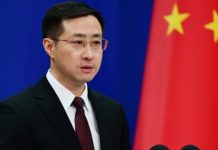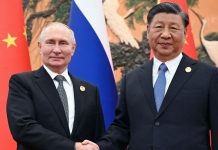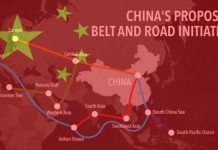BEIJING: By bringing multi-dimensional connectivity, the Belt and Road Initiative (BRI) means a lot to Asian countries like Bangladesh, Cambodia, Indonesia, Laos, Pakistan and Sri Lanka.
Belt & Road: Proposed by China in 2013, the BRI, which consists of the Silk Road Economic Belt and the 21st-Century Maritime Silk Road, features building infrastructure and trade networks to connect Asia, Europe and Africa along the ancient trade routes of the Silk Road.
Pursuing dreams: The Belt and Road is not only about national development and regional integration, but is also about the dreams of ordinary people.
Known as Song Peng, the 23-year-old trainee for the China-Laos Railway under construction wants to become the first female train driver on the first modernized railway in Laos. “I think women can also do things men can do.”
For 23-year-old Najeeb Uddin, meanwhile, a handicraft shop owner in northern Pakistan’s Hunza Valley, the Karakoram Highway (KKH), also known as the China-Pakistan Friendship Highway, has brought him more income. “My business is getting better and better in recent years,” Uddin told Xinhua. “None of this can be achieved without the Karakoram Highway outside the door … A good road is a precondition for attracting tourists.”
“The road is the most important means of earning bread and butter for the people of the area.” The Karakoram Highway, one of the world’s highest paved roads and a popular tourist attraction, is often referred to as the Eighth Wonder of the World due in part to the difficult conditions in which it was constructed. “The road is the most important means of earning bread and butter for the people of the area,” Faizullah Firak, Gilgit-Baltistan government spokesperson, said.
Now the highway reaches further in its extension as part of the Belt and Road.
Fast road, fast track: The China-Laos Railway and a high-speed railway in Indonesia are among the Belt and Road projects for faster transport, trade and growth.
The 414-km Laos-China Railway, a strategic docking project between the BRI and Laos’ development strategy to turn the land-locked country into a land-linked hub, is a “long-awaited road of dreams” for the people, said Saithong Keoduangdy, chairman of the Lao National Assembly Law Committee.
“Its opening to traffic next year will improve the living standards of the people along the railway, will increase employment, and help the Lao people walk on their way to prosperity,” he said.
“The Laos-China Railway is a long-awaited road of dreams for the people of Laos.”
The 142.3-km Jakarta-Bandung High-Speed Railway, launched in 2016 with a design speed of 350 km per hour, is expected to cut the traveling time from Indonesia’s largest city Jakarta to West Java province’s capital Bandung to 40 minutes from more than three hours.
Indonesian President Joko Widodo said, “The increasing mobility of people and products will lead us to win the competition among nations.” Firsts, biggest: The Belt and Road means “firsts,” among which are the first metro line in Pakistan and the first expressway in Laos, and it means the biggest bridge for Bangladesh.
Pakistan’s 27-km Lahore metro Orange Line, with a daily ridership capacity of 250,000 people, runs through Lahore’s heavily populated areas and provides a splendid overlook of the Shalamar Gardens, a UNESCO-listed world cultural heritage.
– The Daily Mail-Beijing Review News exchange item






